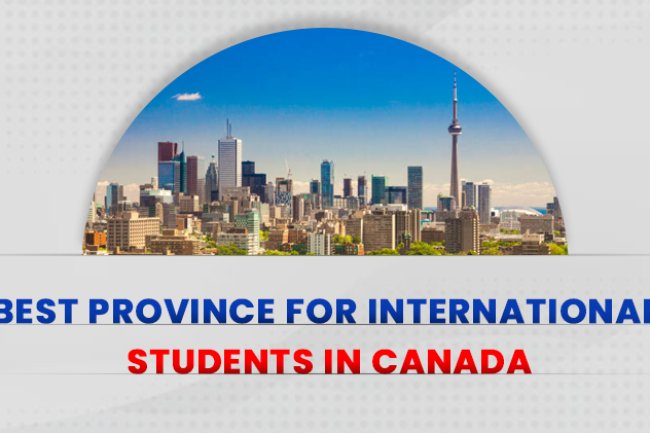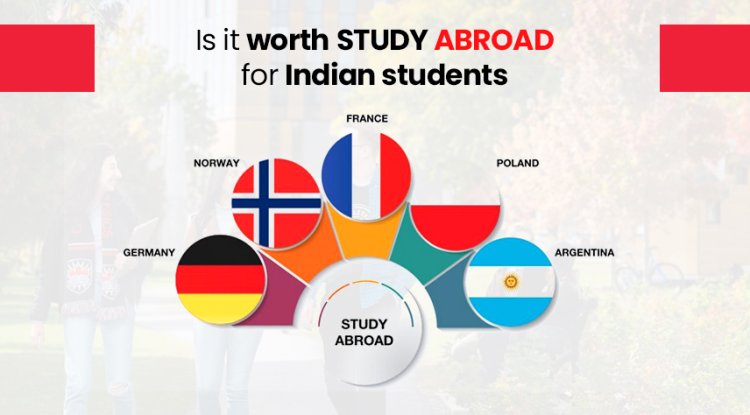OSSD Canada (Ontario Secondary School Diploma )
OSSD Canada is Ontario Secondary School Diploma given to students in the Canadian province of Ontario. For those looking to pursue high school education in Canada, this programme offers a distinctive platform.

The term "OSSD" refers to the diploma given to students in the Canadian province of Ontario who successfully completes their secondary education. Students must fulfil a predetermined number of credits in a variety of areas as well as additional requirements established by the Ontario Ministry of Education to receive an OSSD. This often comprises a predetermined number of required and optional courses, as well as participation in the community and literacy standards.
Is OSSD recognised globally?
The OSSD Canada(Ontario Secondary School Diploma) is usually accepted as being equal to secondary school diplomas from other nations on a global scale. Many Canadian institutions and colleges recognise the OSSD as completing their entrance requirements. To ensure that a certain university will accept the OSSD, it is essential to contact that institution directly. Additionally, as part of the application process, students with an OSSD might need to pass extra entrance examinations or fulfil other prerequisites.
Introduction
Students in the Canadian province of Ontario who successfully finish their secondary education are given the Ontario Secondary School Diploma (OSSD). The OSSD Canada curriculum is intended to prepare students for post-secondary education or the workforce and is normally completed over the course of four years.
Students must fulfil a predetermined number of credits in a variety of areas as well as additional requirements established by the Ontario Ministry of Education in order to receive an OSSD. These prerequisites often include a predetermined number of optional and required courses, as well as community service and reading standards.
The OSSD program's required classes frequently cover topics including English, math, science, social studies, and physical education. On the other side, elective courses are those that are picked by the students and might cover topics like art, music, business, and technology.
Students must also fulfil a literacy requirement in addition to the academic ones. This usually entails passing a reading, writing, and math standardised test. Additionally, they must complete a predetermined number of hours of community involvement, which can be fulfilled by volunteering, taking part in extracurricular activities, or performing other types of community service.
Students who complete the OSSD programme successfully and fulfil all prerequisites will get the OSSD diploma, which is commonly regarded as being similar to the secondary school diploma of other nations.
The organisation of Canada's educational system
The primary, intermediate, and post-secondary education sectors of the Canadian educational system are separated.
Primary education: Also known as elementary school, this level of education is for students between the ages of 5 and 12. It is split into grades 1 through 8.
Secondary education: Also known as high school, this level of education is for students between the ages of 12 and 18. The grades range from 9 to 12. To obtain a high school diploma, such as the Ontario Secondary School Diploma (OSSD), British Columbia Certificate of Graduation (BC Dogwood), Quebec Secondary School Diploma (QSSD), etc., students must pass a specific number of credits in a variety of disciplines.
Post-secondary education, which includes universities, colleges, and vocational schools, is for students who have finished their secondary education. While colleges offer apprenticeship programmes, universities offer undergraduate and graduate degree programmes.
Read Also: Study In Canada
It's crucial to remember that because the provinces and territories govern the education system, there may be differences in the organisation, content, and graduation standards between various parts of Canada. In addition, there are other school kinds, including public, private, and independent schools, each of which has an own curriculum and set of entry requirements.
OSSD Exam
The OSSD Canada is a diploma that students must finish after completing a number of courses and other prerequisites. It is not dependent on a single exam. Students who successfully complete the graduating criteria established by the Ontario Ministry of Education are given the OSSD.
The typical criteria to get an OSSD include:
- Completing a predetermined amount of credits in both required and elective areas.
- Passing a test that evaluates students' math, reading, and writing abilities as part of the literacy requirement
- Completing a predetermined number of hours of community service, which may be fulfilled through
- volunteering, involvement in extracurricular activities, or other activities.
- Achieving a minimum grade of 50% in each of the required courses.
- Meeting any additional requirements imposed by the educational institution or school board.
- It's crucial to remember that the institution—typically a high school—where the student completed the criteria awards the OSSD. Throughout their OSSD programme, students may be required to complete assessments, quizzes, examinations, and evaluations as part of their coursework. These tests, however, do not make up a single exam required to receive the OSSD diploma.
Compulsory Credits in OSSD
The Ontario Secondary School Diploma (OSSD) is a credential that students must complete a set amount of mandatory courses in order to obtain. All students must enrol in these classes, which are often in basic areas, including English, math, science, and social studies. Depending on the school board or educational institution, the precise number of compulsory credits required may change. Still, generally speaking, students must pass a set number of courses in each of these topics.
A student may be required to complete the following kinds of mandatory credits in order to receive an OSSD:
- 4 English credits
- 3 credits for math
- 3 credits for science.
- 3 credits in social studies
- 1 credit for physical education
- 1 credit for health and physical education
- 1 credit in the arts
It's vital to keep in mind that the actual requirements may change depending on the school board or educational institution and that the Ministry of Education may amend the contents and standards at any time.
Elective Credits in OSSD
Students in the Ontario Secondary School Diploma (OSSD) curriculum must complete a specific amount of elective credits in addition to the mandatory credits. The purpose of elective credits is to supplement and broaden the student's education through courses they select from a list of possibilities. They frequently cover topics including technology, business, music, and the arts.
According to the school board or educational institution, the precise number of elective credits needed may vary, but generally speaking, students must finish a set number of courses in elective areas.
A student may be able to select from a variety of elective credits to finish an OSSD, as shown by the following example:
- Languages (French, Spanish, etc.)
- Studies in business (Accounting, Marketing, etc.)
- Technology research (Computer Science, Robotics, etc.)
- Applied Research (Law, Science, etc.)
- The Arts (Drama, Music, Visual Arts etc.)
- Cooperative learning
It's crucial to remember that the actual alternatives could differ based on the school board or educational facility and that the Ministry of Education could change the requirements and content at any time.
Literacy Requirement in OSSD
The Ontario Secondary School Diploma (OSSD) programme includes a literacy requirement that students must complete in order to graduate and get their diploma. In order for pupils to succeed in post-secondary education or the workforce, the literacy requirement is meant to ensure that they have acquired the requisite reading, writing, and math skills.
Read Also: Top Universities in Canada for MS
Depending on the school board or educational institution, the particular structure of the literacy requirement may change, but in general it entails passing a standardised test that evaluates pupils' reading, writing, and math skills.
The test is typically given in grades 10 or 11, and it typically consists of multiple-choice and open-ended questions. The test often examines a variety of reading, writing, and mathematical abilities with an emphasis on application.
It's significant to highlight that support and adjustments are offered to students who have trouble taking the exam in order to help them satisfy the literacy requirement.
Community Involvement
Participation in the community is a crucial part of the Ontario Secondary School Diploma (OSSD) programme. It is intended to aid children in cultivating a feeling of civic responsibility and in learning more about their neighbourhood and the wider globe.
Depending on the school board or educational institution, the precise requirements for community involvement may change, but generally speaking, students must complete a predetermined number of hours of voluntary work or extracurricular activities. Typically, the hours can be collected by volunteer work, community service, involvement in extracurricular activities, or other types of community involvement.
It's vital to highlight that students are encouraged to select extracurricular activities that fit with their passions and interests and that have personal significance for them. Students should have the chance to practise leadership, communication, and teamwork skills through the activities.
Requirements for Graduation in OSSD
Students must fulfil certain standards established by the Ontario Ministry of Education in order to graduate and acquire the Ontario Secondary School Diploma (OSSD). In order to guarantee that students have the information and abilities needed to excel in post-secondary education or the workforce, these standards have been put in place.
An example of some of the graduation requirements a student might have to fulfil in order to qualify for an OSSD Canada is given below:
- Fulfil the Ministry of Education's requirements for a predetermined number of required and elective credits in a variety of topics.
- Meet the literacy criterion, which often entails passing a reading, writing, and math standardised test.
- Put in a predetermined amount of hours volunteering, taking part in extracurricular activities, or performing other types of community service.
- Have a minimum grade of 50% in all required courses.
- Meet any additional standards imposed by the educational institution or school board.
What is the OSSD equivalent?
Most people agree that the secondary school diplomas from other nations are equivalent to the Ontario Secondary School Diploma (OSSD). This means that the OSSD will frequently be accepted as satisfying the entrance requirements of institutions and colleges outside of Canada. To ensure that a certain university will accept the OSSD, it is essential to contact that institution directly.
The OSSD is also accepted as the official high school graduation credential in Ontario by the Ministry of Education, and it is comparable to the high school diploma issued by other Canadian provinces. It is also accepted as satisfying the requirements for high school graduation by many universities and institutions in other nations, including Canada and many more.
It's vital to keep in mind that some universities or colleges might have extra standards or requirements that students with an OSSD might need to achieve in order to be accepted into their programmes. Additionally, as part of the application process, students might need to pass supplementary admission examinations or fulfil additional prerequisites.
What is the Indian equivalent of high school?
The Secondary School Certificate (SSC), also known as the Indian Certificate of Secondary Education, is the Indian equivalent of high school (ICSE). The SSC is an open test given to 10th graders in India and is administered by various state boards. The Council for the Indian School Certificate Examinations (CISCE) administers the ICSE, a private test, to students in grades 10 through 12.
The normal educational requirements needed for pupils to continue on to higher education or vocational training in India are SSC and ICSE, which are both regarded as being the equivalent of the high school diploma in Canada. These tests, which include a wide range of disciplines including science, math, social studies, languages, and electives, are given at the conclusion of the tenth grade.
It's vital to remember that many Indian universities and colleges may have additional standards or requirements that SSC or ICSE graduates must achieve in order to enrol in their programmes. Additionally, as part of the application process, students might need to pass supplementary admission examinations or fulfil additional prerequisites.
Indian versus Canadian Educational Systems
Indian and Canadian educational systems are similar and dissimilar in some ways. Both nations have a public and private system of education, and their primary, secondary, and higher education systems are similar. The two systems do differ in several significant ways, though.
The curriculum is one of the key distinctions between Indian and Canadian education. While Canadian education is more decentralised, with curriculum devised and implemented at the provincial level, Indian education follows a centralised curriculum established by the government. Furthermore, rote learning and memorization are highly valued in the Indian educational system, but critical thinking, problem-solving, and hands-on learning are valued in Canadian education.
The method of assessment and evaluation used by the educational system is another distinction. In Canada, students are evaluated by a combination of examinations, assignments, and projects, in contrast to India where students are evaluated through a series of standardised tests.
The Indian educational system follows a 10+2 framework, where 10 years of formal education are followed by 2 years of higher secondary education. The Canadian educational system, on the other hand, has a 12-year structure, requiring students to finish 12 years of formal education before continuing on to post-secondary education.
There are many undergraduate, graduate, and postgraduate programmes offered by Indian universities and colleges in the field of higher education, although many of them are focused on the conventional fields of engineering, medical, law, and management. Although Canadian colleges and universities likewise provide a wide variety of programmes, they also frequently have a greater selection of multidisciplinary and professional programmes.
Benefits of the OSSD
Students can benefit from the Ontario Secondary School Diploma (OSSD) in a number of ways. Among the main advantages are:
- Internationally, the OSSD is usually accepted as being equivalent to other countries' secondary school diplomas. Many Canadian institutions and colleges recognise the OSSD as completing their entrance requirements.
- To prepare pupils for post-secondary education or the workforce, the OSSD programme has been created. The curriculum covers a range of topics designed to give students a comprehensive education and help them acquire the abilities they'll need for their future employment or academic pursuits.
- Flexibility: Because the OSSD programme offers both required and optional courses, students have the freedom to select classes that match their interests and passions. Students may be able to participate more fully in their education and more effectively develop their skills and abilities as a result.
- Community Involvement: Another requirement in the OSSD programme encourages students to get more involved in their community and to grow in their sense of civic responsibility. In addition to helping children develop critical abilities like teamwork and leadership, this can increase their awareness of the world around them.
The OSSD programme has a literacy requirement that makes sure pupils have acquired the reading, writing, and math abilities required to succeed in post-secondary school or the workforce.
OSSD online
Online study is an option for the Ontario Secondary School Diploma (OSSD) programme. Students who have hectic schedules or who reside in remote places may find that online learning gives them the flexibility to learn at their own speed and on their own timetable.
Online OSSD programmes are primarily provided through distance learning or virtual schools that are approved by the Ontario Ministry of Education. The curriculum and graduation standards for these programmes are typically the same as those for conventional, on-site OSSD programmes; however, the content is delivered online, and the assessments are conducted online.
Online lectures, videos, interactive activities, and virtual debates are all possible components of online OSSD programmes. It also offers access to teachers and mentors online for guidance, as well as online tests, assignments, and projects.
It's crucial to remember that online OSSD programmes are not appropriate for everyone and that in order to succeed, students must be driven on their own and well-organized. It is also advised to inquire about the most recent details of the online OSSD programme they provide and its accreditation with your school board or educational organisation.
What's Your Reaction?




















